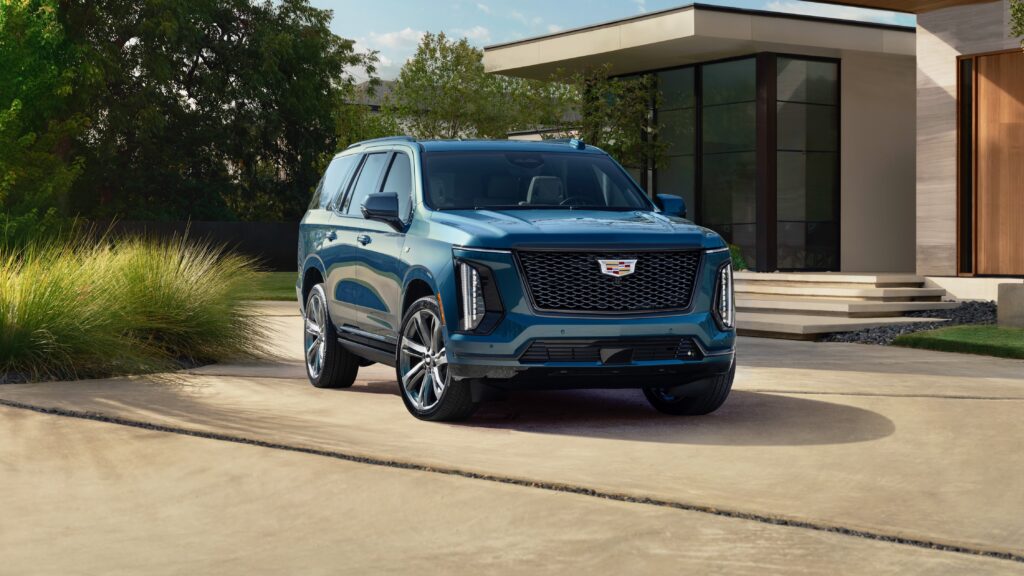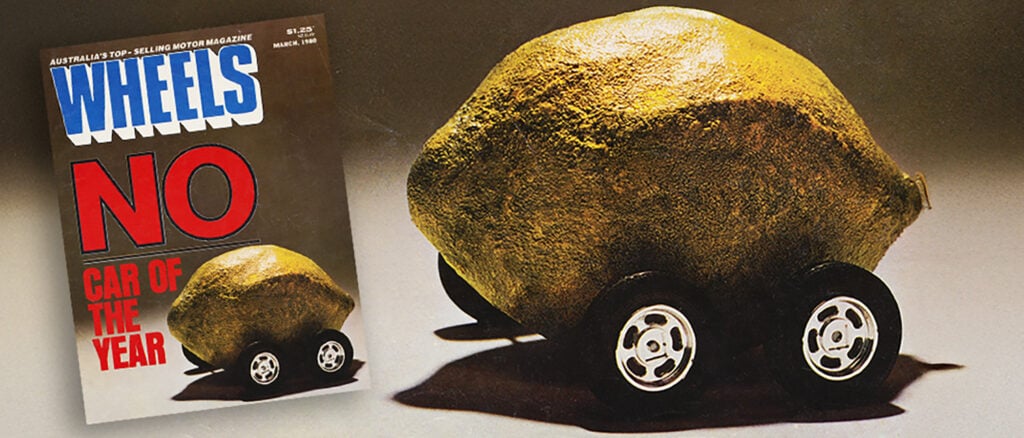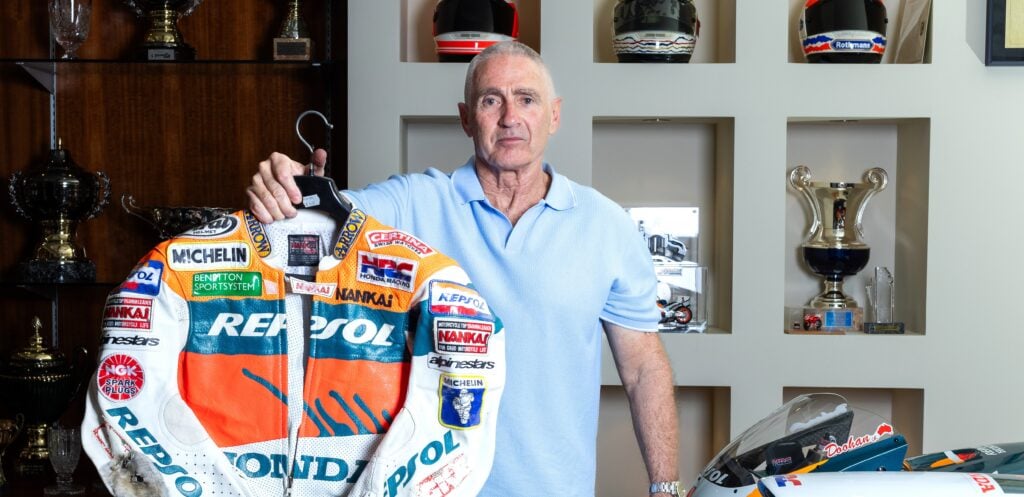STOP PRESS: JUN II reclaims its world record to the tune of 6.77-seconds at 212mph, 1 April 2021 at Sydney Dragway.
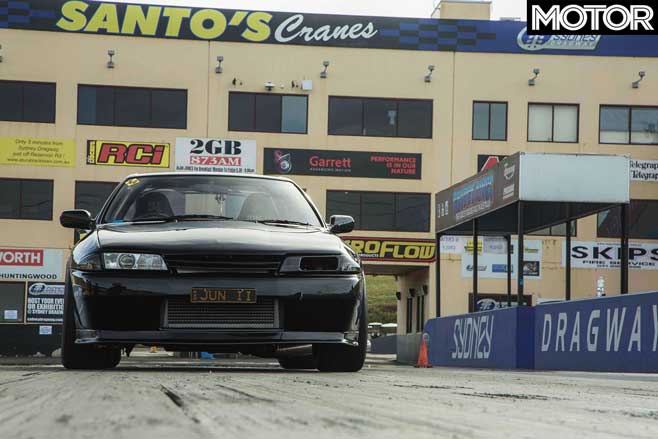
When it comes, the answer is unequivocal. Certain. Iron-clad. And frankly detrimental to the whole point of this exercise.
Not, ‘Well, we’ll have a think about it.’ Not, ‘If you’ve got all the gear and promise not to be stupid, go right ahead.’ No, this is a straight up and down, flat rejection.
Delivering this answer is the management of Sydney Dragway, refusing our request to ride shotgun alongside Rob Marjan in his Nissan Skyline R32 GT-R, known the world over as JUN II. Okay, to be fair, it’s not just any old R32 GT-R. It is the world’s fastest street-registered Skyline, and packs a deeply serious punch.
How serious? How does 6.86 seconds down a quarter-mile grab you? At more than 320km/h! Sure, you say, that’s pretty handy, but that’s a proper racing car and… Let me stop you right there. Just in case you missed it, let me say it again: JUN II is street-registered. And street-drivable. Legally. Just ponder that for a moment.
“When we ran the six, we drove back from the track to the workshop,” grins owner/driver Marjan. “That got a lot of views on YouTube.”
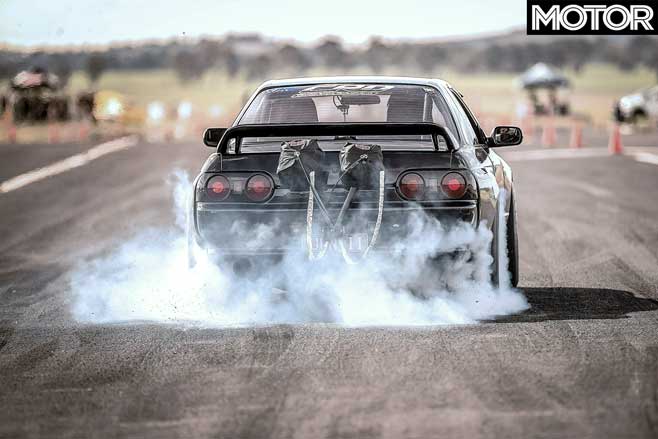
Anyway, without a permit and an ambulance (and probably not even then) the plan of rearranging my insides today with 2.4G of lateral acceleration is put on ice. Disappointment – and a teeny, tiny bit of relief, if I’m honest – is etched on my face as we trudge back downstairs to the sight of this surprisingly petite drag racing superstar sitting silently on the start line, awaiting a staging sequence that would not come this day.
“I suppose we could try and do a run after next weekend’s GT-R Festival,” muses Rob. What? The dream is still alive?
Rob’s history with JUN II was born from a determinedly – some might say bloody-mindedly – focused point of view: to own the fastest street-registered GT-R in the entire universe.
“I have a principle behind it, if you want to call it that,” says Marjan, whose day job is running the renowned Ali Baba kebab chain. Not for him a clip-on fibreglass nose, aluminium flat-deck spoiler and polycarbonate windows.
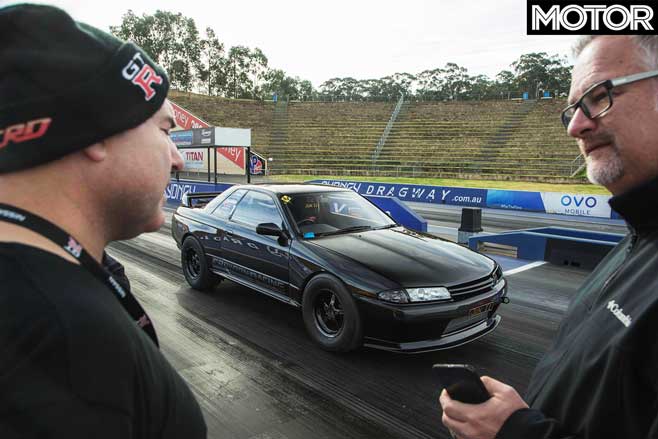
Rob is fiercely proud of the fact that his lean, lithe R32 has the power of at least six of its production-line companions, and yet to the untrained eye – at least away from the twin five-inch exhausts poking out of the left sill and bulbous drag tyres – looks almost stock.
“It’s registered, with a full exhaust,” he explains. “It has all of the standard body parts, including the rear wing. Full interior, two seats, dashboard, all this standard [door trim] material, radial tyres, carpet, rear seats, all the glass still intact…
“Take that rear wing, for example. It’s slowing us down, I know it is. And everyone keeps reminding me, but I won’t take it off. Sure, when we’re over 200 miles an hour (320km/h), it could give us two, three, maybe five miles an hour. I know it’s slowing us down, but how beautiful is it that a car that’s in factory trim can be the quickest car in the world?”
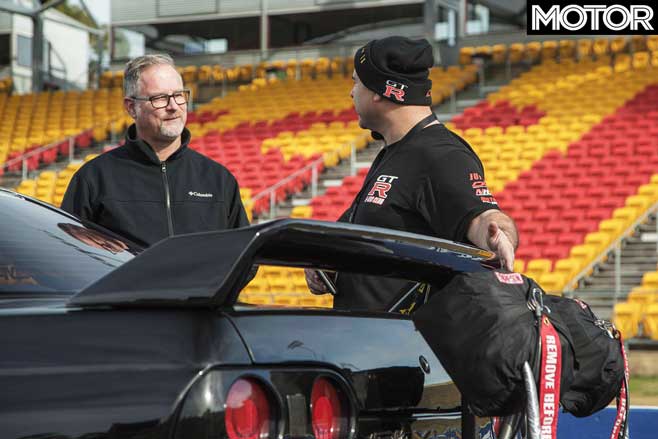
Rob bought the car – then known as JUN I – about 12 years ago as a 550kW going concern. It replaced another Nissan, a heavily worked 200SX called Devilish. “I’ve had a passion for fast cars for a long time,” he says, “and I was buying and selling a few GT-Rs. I loved the engineering in them, and they were quick, and just beautiful cars.
“A friend of mine from Canberra was building this particular car at Croydon Autosports while I was racing Devilish. At Summernats one year, he said, ‘Rob, do you want to drive the car? I don’t think I’m up to it.’ I said, ‘Sure, no worries.’ Never sat in the car, didn’t know the car, and we won our first race.
“I fell in love with the GT-R there and then. It was really, really good; it was just a different sort of car than the 200SX that I had. It was still drivable, which is what I liked.”
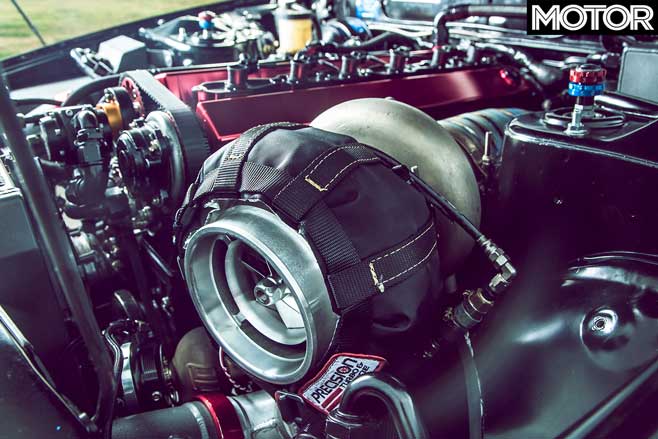
As it sits today, about 29 years after it landed in Australia as one of the 100 locally delivered GT-Rs, the car’s plain black paint is still in amazingly good condition. The front bar and rear spoiler are, as Rob points out, left as Nissan intended.
The only blatantly obvious concessions to the realities of the car’s potential is an air intake where the left-side headlight would – and can still – sit, and of course the twin parachutes mounted on the rear scuttle panel.
“We had to go to twin-chute when we ran sevens,” Rob explains, adding that he had a pretty sizable accident when the previous single-chute set-up failed in strong winds and he ended up in the tyres at the far end of the strip. Gulp.
On the inside, a pair of customised carbonfibre race seats, roof-mounted chute release and a six-point chromoly cage are the most obvious signs that this thing is not what you’d call normal. Swing your gaze to the transmission and the three-speed Al’s Race Glides TH400 transmission stick and MoTeC dash also give the game away.

But the steering wheel is stock, the handbrake is still there, and so are the buttons on the left side of the instrument binnacle, except that they have been wired up to scroll through the pages on the race dash.
The other fiendishly cool element to JUN II is that it starts on a plain old Nissan key with a battered plastic fob, its silver blade tarnished and rounded by nearly 30 years of use.
We need to move the car for more photos, and Rob casually reaches down and twists. The R32 bursts into life like a Zero fighter, its deep, baritone, thrumming bark actually vibrating the car minutely down the track. Its menace and intent is unmistakable – it doesn’t sound like an inline-six. At all.

Under the steel bonnet lies a Nitto-stroked 3.2-litre RB30 with a billet block, fed United E85 by 12 fuel injectors and a customised under-bonnet surge tank on the right guard. The Precision XP098 turbo could hide a rockmelon, and can handle up to 2300bhp, according to Rob, while the whole shooting match is orchestrated by MoTeC.
“We run nitrous to the car, both to bring it up on the transbrake as well as down the track for extra power,” he says. “From an engineering perspective, the car is how they were designed out of the factory back in 1989. Everything’s upgraded around it to make sure that we can handle the power, and give us the power.”
Rob says the three-speed TH400 automatic is one of the magic bullets for the GT-R… that and refabricating everything in the GT-R’s driveline that could twist, shear, snap or shatter under the engine’s relentless urge.
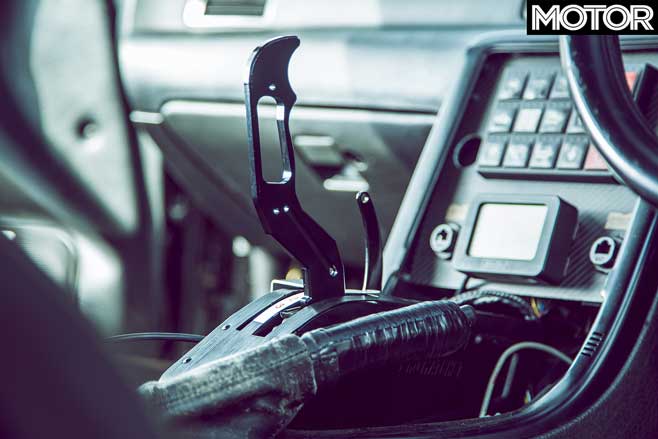
“Even the [chassis] flex plates were breaking. We have to build billet shafts, because in the past we’ve broken two transfer cases. The diff has been upgraded to a nine-inch spool to handle the power as well.”
Although the car retains the standard IRS suspension and arms, it has been tweaked to within an inch of its life, and the Mickey Thompson drag radials – and, yes, they are literally street-legal – are the best that money can buy.
“Should we go for a cruise on the road?” Rob asks. Do I need to answer? With the pipes exiting under my left butt cheek, I’m grinning like a beagle as we set off for a quick burger run.
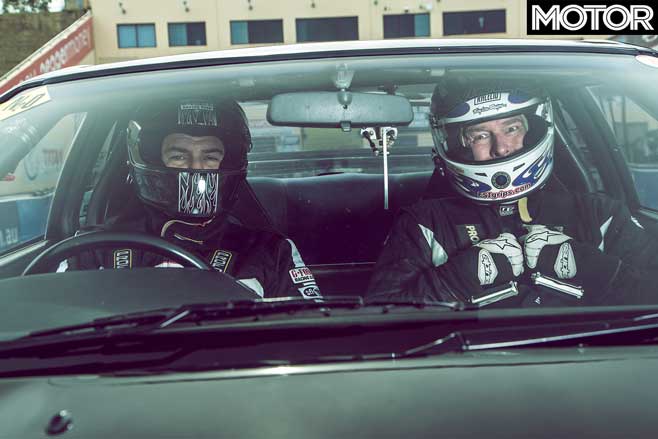
The ride is choppy but bearable, with huge amounts of compression damping built in to handle the weight transfer. The MoTeC computer does a frankly incredible job of keeping the mighty mill docile and tractable.
It’s the carpet I admire most, and I suggest to Rob it must be a psychological ploy as much as anything for his potential rivals in this high-stakes game. He doesn’t reply, but his grin says it all.
JUN II rumbles through the crowded Maccas car park, tradies and suit-wearers alike swivelling to sight the source of the sonic disruption. “Thick shake and a bottle of water please,” Rob asks the impressively uninterested drive-through attendant. “I’m amazed she could even hear me!” he laughs.
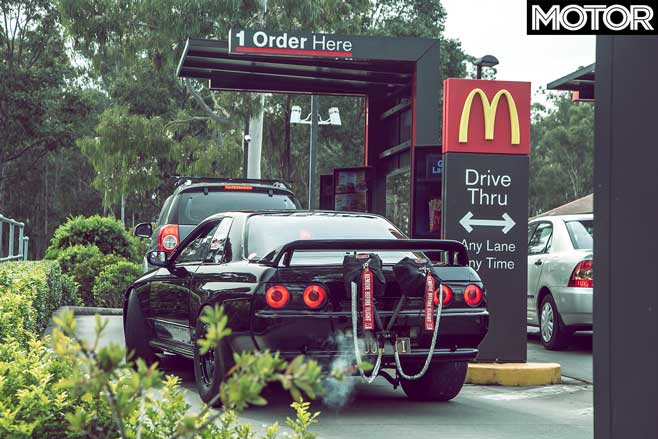
Rob drops me back to my car, with a date to catch up at the annual GT-R Festival back at Sydney Dragway the following weekend. I wouldn’t miss it. After all, it’s not every day you see a six-second GT-R in full flight.
There are more than 400 cars on site today, and Rob has brought a large crew to send JUN II down the strip as part of the event. As afternoon draws into evening, JUN II is swarmed over by an army of Croydon Racing Developments mechanics, while Rob’s extended family prepares the best racetrack food I’ve ever had. It’s a fabulous atmosphere. “We wouldn’t do it if it wasn’t fun,” says one of the lads.
Unsurprisingly, we’re knocked back again from taking a ride during the drag meet, so I take up a trackside vantage point.

Rob loads up the trans brake, the GT-R building revs and noise like a WWII fighter plane straining at the chocks. Suddenly, the rears whip into life and the side pipes simply spew out acrid E85 fumes into the crowd. He winds up the 1800-horsepower rubber band under the bonnet before slipping the brake and simply explodes away from the line.
The rear squats viciously and the fronts are all but airborne as JUN II veers savagely to the left. Almost unbelievably to my untrained eyes, Rob stays with it and keeps the car – somehow – tracking straight and true, building inconceivable speed before flashing past the finish line at 7.1 seconds and 201mph (323km/h). It’s an assault on every sense.
“Yeah, that was pretty comfortable,” he tells me as he rolls back in. “Still plenty more in it. Might be time to add the nitrous.” I am literally speechless. He will go on to record a night-winning 6.9sec/208mph (335km/h).
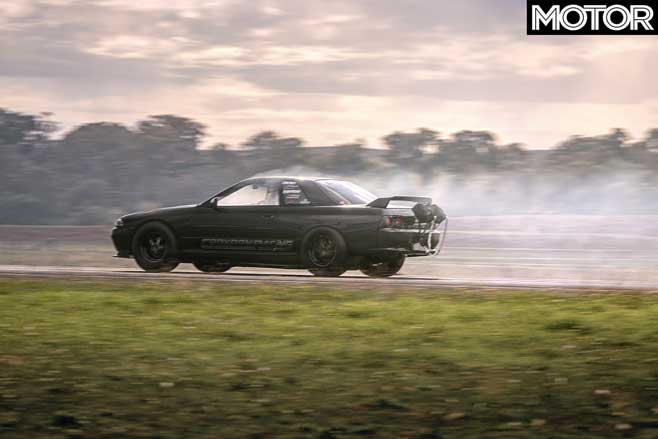
JUN II is an absolutely astonishing feat of engineering, made all the more remarkable by Rob Marjan’s relentless determination to stay true to the vision he formed back when he bought the car. He is, however, planning a full-house drag car that won’t carry the same compromises that JUN II wears.
But JUN II has a place in the lexicon of the GT-R, in the same way as some of the more storied cars in this issue. Its simplicity of form belies its absolutely incredible abilities… and isn’t that what the legend of GT-R is all about?
*Thank you to Croydon Racing Developments, Robert Marjan and Sydney Dragway for their assistance with this story.
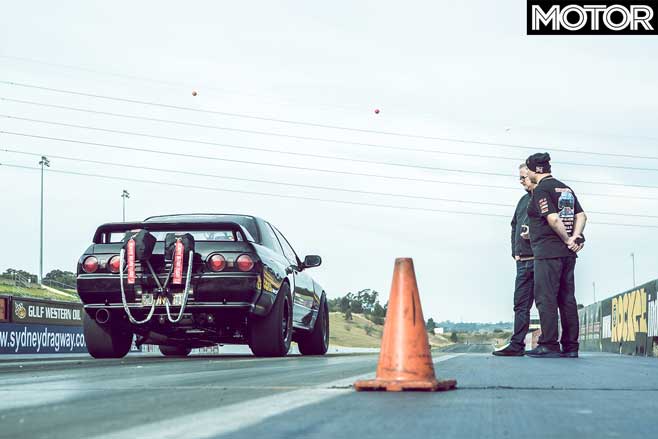
FAST FACTS Nissan Skyline GT-R ‘JUN II’ BODY: 2-door, 2+2 seat coupe DRIVE: all-wheel (nine-inch spool rear diff) ENGINE: 3.2L inline-6, DOHC, 24v, turbocharged (Nissan RB30, billet block, Nitto 3.2L stroker kit, dry sump, Precision XP098 turbo) POWER: 1400kW (estimated) TORQUE: 2000Nm (estimated) WEIGHT: 1645kg POWER-TO- WEIGHT: 851kW/tonne TRANSMISSION: 3-speed automatic (Al’s Race Glides TH400) SUSPENSION: double wishbones, coil-over struts (f/r) L/W/h: 4545/1755/1340mm WHEELBASE: 2615mm TRACKS: 1480/1480mm (f/r) STEERING: power-assisted rack-and-pinion; rear-steering WHEELS: 15.0 x 8.0-inch (f/r) TYRES: Mickey Thompson ET Street Radial Pro; 275/60 R15 (f/r) PRICE: “Don’t ask”
Nissan Skyline GT-R ‘JUN II’ Performance figures 0-60ft (18.2m): 1.242sec 0-330ft (100.6m): 3.096sec 0-1/8 mile (201.1m): 4.596sec @ 264.01km/h 0-1000ft (304.8m): 5.891sec 0-1/4 mile (402.3m): 6.993sec @ 328.0km/h
0-100km/h: 0.96sec 0-200km/h: 2.85sec 0-300km/h: 6.69sec
Sydney Dragway, 17˚C, dry. Driver: Robert Marjan



